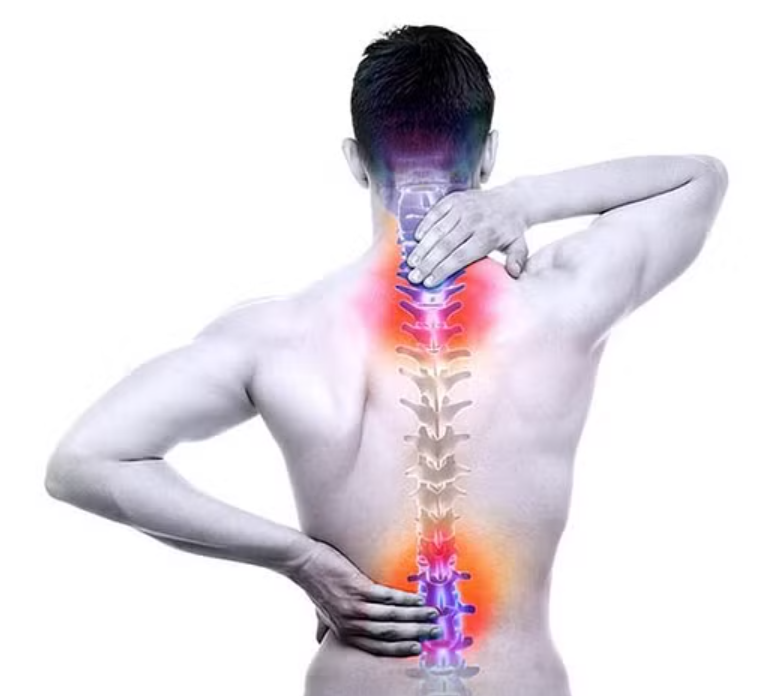Anterior Cervical Discectomy and Fusion (ACDF) surgery, commonly known as anterior cervical fusion surgery, is a widely recognized procedure for addressing issues in the cervical spine. The cervical spine, consisting of seven vertebrae in the neck region, plays a crucial role in supporting the head and facilitating movement. However, due to various factors such as aging, injury, or degenerative conditions, this part of the spine can develop problems that lead to pain, numbness, and mobility issues.
In this article, Dr. Alok Sharan, an expert in spine surgery, provides an in-depth look at ACDF surgery, its indications, the procedure itself, and what patients can expect during recovery.
What is ACDF Surgery?
ACDF surgery is designed to relieve pressure on the spinal cord and nerve roots by removing a damaged disc or bone spur in the cervical spine. The procedure involves two main components: the discectomy and the fusion.
- Discectomy: In this step, the surgeon removes the herniated or degenerated disc that is compressing the spinal cord or nerves. This relieves the pain and other neurological symptoms associated with the condition.
- Fusion: After the discectomy, the surgeon places a bone graft or a cage filled with bone graft material into the space where the disc was removed. This graft helps fuse the vertebrae above and below the removed disc, stabilizing the spine. Over time, the bone graft will grow and permanently join the vertebrae together.
Indications for ACDF Surgery
ACDF surgery is typically recommended when non-surgical treatments such as physical therapy, medications, or epidural steroid injections fail to provide relief. Conditions that may necessitate ACDF surgery include:
- Herniated Disc: A herniated disc occurs when the inner gel-like material of the disc leaks out, pressing on the spinal cord or nerves and causing pain, weakness, or numbness.
- Degenerative Disc Disease: With age, the discs between the vertebrae can wear down, leading to pain and instability in the cervical spine.
- Cervical Spondylosis: This condition, also known as cervical arthritis, involves the wear and tear of the cervical spine due to aging, leading to bone spurs and disc degeneration.
- Cervical Stenosis: This is a narrowing of the spinal canal that can compress the spinal cord and nerves, leading to significant pain and neurological issues.
The ACDF Procedure
ACDF surgery is performed under general anesthesia. The procedure generally takes between one to three hours, depending on the number of levels being treated.
- Incision: The surgeon makes a small incision in the front of the neck, allowing access to the cervical spine.
- Disc Removal: The damaged disc is carefully removed, and any bone spurs that may be causing compression are also addressed.
- Bone Grafting: The surgeon places a bone graft or an artificial cage into the empty disc space to promote fusion.
- Stabilization: A small plate and screws are often used to provide immediate stability to the spine and facilitate the fusion process.
- Closure: The incision is closed with sutures or staples, and a bandage is applied.
Recovery and Outlook
Recovery from ACDF surgery typically involves a hospital stay of one to two days, though some patients may go home the same day, depending on the extent of the surgery and their overall health.
- Pain Management: Post-surgery, patients may experience some discomfort at the incision site and in the neck. Pain medications and muscle relaxants are prescribed to manage these symptoms.
- Activity Restrictions: Patients are generally advised to avoid heavy lifting, twisting motions, and excessive neck movements for several weeks. Wearing a cervical collar may be recommended to provide additional support during the initial healing phase.
- Physical Therapy: After a few weeks, physical therapy may be recommended to strengthen the neck muscles and restore range of motion.
- Follow-Up: Regular follow-up appointments with Dr. Alok Sharan are crucial to monitor the fusion process and ensure proper healing.
Conclusion
ACDF surgery is a highly effective treatment for alleviating pain and neurological symptoms associated with cervical spine conditions. By removing the damaged disc and fusing the vertebrae, the procedure restores stability to the spine and improves the quality of life for many patients.
If you are experiencing chronic neck pain or neurological symptoms that have not responded to conservative treatments, ACDF surgery with Dr. Alok Sharan could be the solution you need. With his expertise and dedication to patient care, you can expect a comprehensive approach to your spine health and a path to recovery that prioritizes your well-being.

